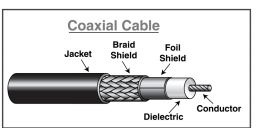Fiber optic cable continue to integrate and revolutionize the spectrum of the cable capabilities in varying industries and will continue to trend forward. Although most understand standard copper cable more, fiber is the cleanest and faster for transmitting communication and data signals. It also can offer the highest capacity of connection for any network.
Topics: Low Voltage Cables, Fiber Optics Assemblies, Fiber Optic Cable, Fiber, Fiber Optic
Importance of Reestablishing Fiber Connections Effectively
Fiber Optic cables offer a business many benefits for safe, fast installations with higher bandwidth frequencies. Fiber optic cables provide extreme pull tensions up to 600 lbs and a bend radius equal to coax cables.
If loss of fiber does occur it can result in disrupted communications and negative effects to local businesses. Review the steps below in order to repair any tainted connections quickly and effectively.
Topics: Low Voltage Cables, Fiber Optic Cable, Fiber Optic Connector, Fiber Optic
When it comes to audio cables recording the right types of sound depends on what cables are chosen during the installation process. In order to recognize the right cables to use, it's important to understand the makeup and design of audio cables. Let's begin...
Topics: Low Voltage Cables, Audio cables, speaker cables, line level audio
If you are familiar with low voltage cables in anyway, you have heard of coaxial cable before and the cable's impedance. Two of the most commonly used that we will discuss more in this article are 50 ohm and 75 ohm and the shielding that is most commonly seen within them.
Topics: Low Voltage Cables, bulk cable, coax cable, impendance, pre-terminated 50 ohm assemblies, 50 ohm assemblies, coaxial cables
Increasing demands for updating data centers are emerging and it's likely it will continue to change rapidly as technology grows leaps and bounds each year.
Topics: Low Voltage Cables, Low smoke, Data center, IT, IT Systems, cooling
As technology advances each year, shielded category cables are becoming more commonly used for a variety of small to large scale projects. Although these are not always required, they are highly spec'd and suggested.
Topics: Low Voltage Cables, Category 7 Cable, Category Cable, Category 6A Cable, shielded cable, bulk cable
Let's Compare: Plenum and Non-Plenum Rated Cables
Every day new products are being introduced into the world of cabling. With newer infrastructures, better technology and business expansions happening on a larger scale, cable products are needed more than ever. One constant that seems to be always taken into consideration when purchasing cable for any major product is if a cable needs to be plenum or non-plenum. In this article, we will be viewing the difference between a plenum and non-plenum rated cable and how to determine which one you will need for an upcoming project.
Topics: Low Voltage Cables, plenum cable, non plenum cable, PVC
Fire Alarm systems can generally be put into two main system designs: Conventional (Analog) and Addressable (Digital). In order to understand what system may be right for your company's building or office, it is important to understand the differences between each system. So let's begin...
Topics: Low Voltage Cables, fire alarm cables, analog, addressable, fire alarm, conventional
With so many companies taking the "green" initiative to improve the distribution of toxic chemicals being dispersed into the environment, organizations are finding new ways to improve consumer safety and environmental factors. Although the demand has risen in recent years, the awareness of cable alternatives is moving rapidly towards alternatives such as Low Smoke, Halogen-Free cables in communication and security applications.
What are Halogens? and why are they dangerous?
Pretty simple. Halogens are found in a variety of various components. For example: flame retardants, building insulations, polyurethane foam and cables. These compounds use chlorine or fluorine and are commonly found in jacketing materials including PVC and CSPE.
When these components are burned they emit toxic fumes into the environment and have the potential to create acid when combined with moisture to create problems for people and industrial environments who have exposure to these elements.
Topics: Low Voltage Cables, Halogen Free, Low smoke, Envionmentally Friendly
Last week our blog post discussed the release of Category 7 Cable. This week we are looking to discuss what factors need to be taken into consideration when choosing Category 7 Cable, and how it compares to the popular Category 6A Cables.
Understanding what connections you are looking for can help determine which cables will provide your project with the right connection and bandwidth.
Topics: Low Voltage Cables, Category 7 Cable, Category 6A Cable











